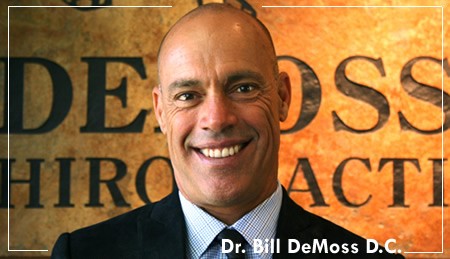This short story may not seem at first to pertain to your chiropractic office, but it does.
In the hot afternoon Sunday traffic, in the right lane waiting to turn right, our lane had stop moving.
Crossing the busy six lane intersection heading toward us was a man in a motorized wheelchair. His face was full but motionless and looked worn. I couldn’t be sure, but he had that straight-ahead look of someone who was blind. He was maybe upper thirties or mid forties with short hair, perhaps a wounded veteran who paid no mind to the antsy cars that waited for him and his wheelchair.
Sitting on his lap was a thin little girl. Maybe eight years old. She was curled up, cuddled with one of her shoulders against one of his. As they were crossing the last three lanes, she stretched out her arm with an open hand as if to say “halt, please let us cross.”
She had the look of a girl who had not had an easy life but was happy to be with this person whose immobile legs she rested on.
Once they made it to the other side our lane started to move. The pair moved closer as I moved forward. It appeared as if she was acting as the man’s eyes and told him when to go. I had the sense that he was a family member, perhaps her father, by the bond they seemed to share.
As I passed them in my nice air conditioned car, I looked closely at the girl and waved to her and smiled. She looked at me directly as I drove by. She gave me a wave and beamed a big smile as if to say “Thanks. We just made it across a busy road and me and my pa are having a Sunday outing.”
In my mind, her face reminded me of pictures of Anne Frank, the girl in Amsterdam that kept a diary before being taken by the Nazis to her death in 1945.
I would have liked to stop and help her in some way. Or say “hi” to the man in the wheelchair who looked so stoic. Maybe there was something I could do for them.
But the fact is – they did something for me.
They set an example – of courage, caring and love. They had heart: For each other, for their goals, and seemingly for their adventure.
Not everything can be put into a mission statement or measured by statistics. No “boot camp” can teach this, and even if all your policies and procedures were followed perfectly, you could still miss it.
Heart.
One office I know has so MUCH heart the whole town loves the office and the office loves the town. The fact that there is a 2-3 week waiting list of new patients is the biggest challenge the office has.
By training and professional experience, I have a bias towards procedures, organizational structure and production. No doubt, without these, offices would experience anarchy or insolvency. But I have also learned that heart is more important.
We can all become discouraged at times. Emotions and confusions can affect your patients as they do you and this can put a barrier around our capacity to care. This may be affecting you or your office now.
But this is only temporary and not the real you.
This is what the little girl gave me. Her wave to me was a “thank you for stopping to let us cross the road”, but also, “we are all in this together.”
That is the lesson I am left with.
There is heroism all around us. Simple and quiet examples of selfless caring and love pass us by daily if we were to notice. People want to help others and want help as well. Why? Because we are all in this together. Because we care. Because we have heart.
Training on procedures such as the report of findings is fine, but your patients aren’t adversaries and neither is your community. They want to get better and they want to help others to get better. Really care for them, really love them, be honest with them, and have the courage to always do this, and they will never leave you.
Whatever your office mission statement says, if you have one, it should say what is in your heart. And if you follow that, I am sure you can successfully pilot your team on its adventure.
# # #
Ed Petty






